A unique hybrid actor in new R&D Project, The Waiting Room
- oneandthreequarter
- Jan 24, 2024
- 4 min read
Updated: Feb 6, 2024

The Waiting Room is an Arts Council England funded research and development project by One and Three Quarters Theatre. It explores a collaboration between writer Susie Eder, dramaturg and access specialist Dr Mo Pietroni-Spenst and artistic director Vicki Oliver, each with their own experiences of disability and access needs. The aim is to create a brand new piece of theatre that tells fragments of stories from waiting rooms, the liminal spaces in which much of the disabled existence occupies. These are the ‘nothing spaces’ in which we, as disabled people, wait for permission to live - the space in which our lives cross paths and our stories collide.
The project has three simple aims:
To devise and create brand new work that shares the disabled experience through honesty and humour.
To push the boundaries of accessible theatre making.

And to collaborate with the wider disabled community to realise the project and its potential.
Vicki, who initially sparked the project idea, explains more about the project.
“I spend a lot of time in waiting rooms of different descriptions; hospitals, clinics, airports, benefits assessments and so on. Often feeling that life is passing me by but simultaneously being fascinated by people-watching and the dramas unfolding around me. Waiting rooms are full of nothing, yet are the places in which we wait for some of the most pivotal moments of our lives. I loath and love them. As a disabled person I see so many rooms, and always feel that I’m waiting and someone else is in control. For seemingly nothing places I’ve witnessed the strangest and most charged dramas unfold. I’ve met people from all walks of life and had the most meaningful and surreal conversations. These moments are the ones I want to explore in devising this new piece of writing with my collaborators.
“We are excited to be working with some really talented and creative partners on this project, made possible by our funding and support. Firstly, we are partnered with Gulbenkian Arts Centre at the University of Kent, as a resident company. As organisations, we support each other in the development of an accessible work environment and in creating and hosting accessible performances. We are critical friends to each other through multiple projects.
“Through this support we have the opportunity to develop our work and our creative and access teams. In my own career, I was forced to stop working due to chronic illness and disability. I was surprised at just how inaccessible the arts sector is. Overwhelmed with the pace and demands of an underfunded and competitive existence I found myself being made more unwell. Eventually I had to stop, I closed my theatre company, gave up lecturing and stopped freelance work. It broke my heart and my soul. As someone who is happiest when creating and needs to be producing new work and connecting with others, I was determined to find a way.
“Whilst I have some clear access needs such as mobility, I also struggle with access needs that are less recognised and often unknown. The energy limiting part of my disability means I have limited hours and work better at certain times of the day. The unpredictability of pain and flare ups (that happen in dynamic disability) means being flexible, yet building a diary in advance that allows for rest and recovery. The sensory side of mental health and neurodivergence means environment and relationships with others are paramount to success. It’s a complex path, but with the support of the company I’ve managed to create a working environment that works for me.

“These needs have often led me to question who is not in the room at events or in the rehearsal studio. I know that many of the chronic illness community feel they cannot contribute due to the unpredictability of disabled life and the fear of letting others down. Having also been left out so many times and feeling my training and experience has gone to waste, I wanted to figure out how we could include those who are missing.
“This quest for new access led to us creating an innovative and experimental role for an actor who finds physically entering the theatre space inaccessible due to their dynamic, energy limiting, sensory or other disabilities. We are addressing this issue by proposing the actor performs live, but using new technology design to ‘project’ them into the space. This means, with the right set up, they could even perform from their bed!

“So how are we going to do this? The answer is collaboration between our actor, our creative and access teams, and working with digital performance artist, Joe Strickland, from Chronic Insanity Theatre Company. It’s exciting as we don’t know exactly how it will look or play out, but Joe’s plan is to use streaming and gaming technology to achieve our aims. Like a lot of our work, we find an access barrier and use our creativity, determination, and expertise to create new solutions. An R&D is an ideal place to creatively play with ideas when we don’t have all the answers but know what we want to achieve.”
So if you are a talented performer who has access barriers to the theatre space, this role is ideal for you! We are looking for an individual who is open to play, risk taking and making mistakes knowing that they are supported by our team. As a company, we work collaboratively and are looking for performers who can work as an ensemble to create new work based on our own experiences and stories as disabled people. We tackle some sensitive themes through humour and by supporting each other. If this is a role that appeals to you then apply here.






Comments